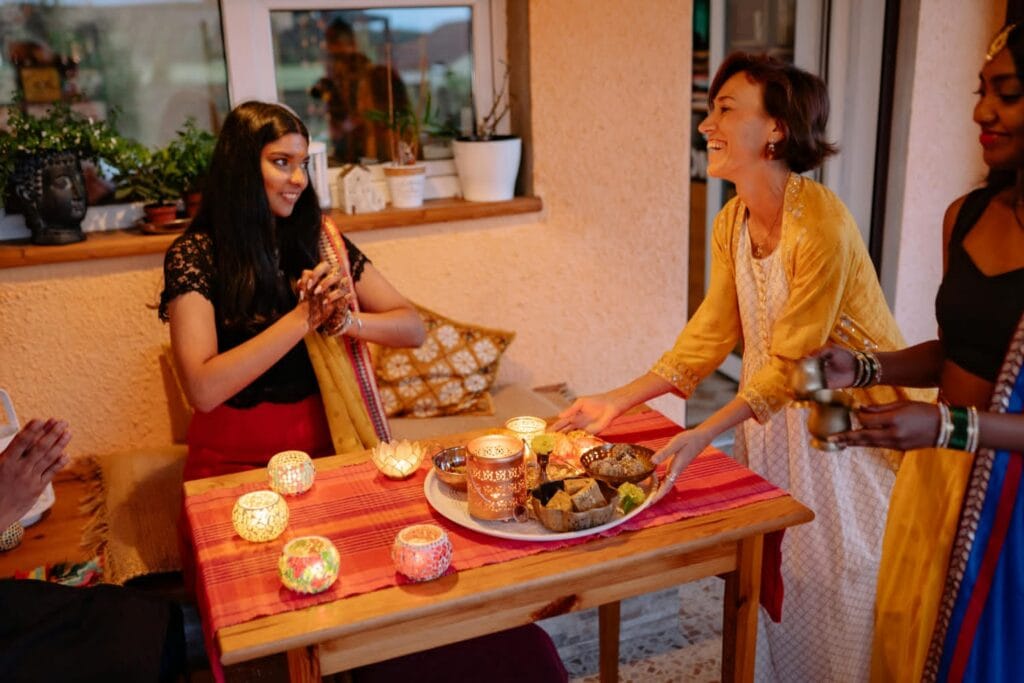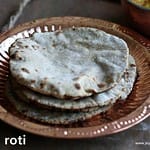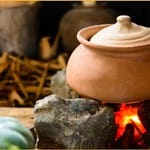History, geography, and cultural diversity are all interwoven into India’s culinary legacy, which is a rich mosaic. Due to native resources, weather, and centuries-old customs, each location has its own distinctive cuisine with a distinct backstory. These customs around eating were maintained in families and communities for a very long time. These practices were diluted, nevertheless, by the flood of industrialization and worldwide influence. A major change has occurred recently, a cultural renaissance directed at recovering and honoring the genuine tastes and customs of Indian cooking.
Indian culinary cuisine at its purest
Vibrant colors, complex flavors, and fragrant spices are all hallmarks of Indian cuisine. In addition to being a sensory extravaganza, traditional Indian cuisine embodies generations of knowledge. Meals were planned with seasonality and nutrition in mind. The idea of “thali,” which provides a well-balanced meal with various components including rice, lentils, veggies, and chapatis, is an example of an all-encompassing strategy. Every component was picked not just for its flavor but also for its therapeutic and nutritional qualities.
Food has long played a significant role in Indian customs, festivals, and family get-togethers in addition to being a source of nourishment. People are connected to their cultural and spiritual traditions through food, whether it’s the lavish Pongal celebrations in the south or the Durga Puja bhog in the east. It conveys messages, meanings, and emotions that cut beyond generations.

The impact of globalisation
The 1990s saw economic liberalization, which made room for international restaurant chains and fast food. As people’s lives became busy, home-cooked dinners became less common as urban lifestyles changed drastically. The prevalence of frozen dinners, prepared foods, and foreign cuisines increased. Although this change was practical, it frequently resulted in a loss of traditional culinary knowledge and a growing disengagement from the cultural significance that home-cooked meals held. Local ingredients and regional cuisines have been eroded as a result of the rise of fast food and shifting eating habits. The transition from home-cooked to processed meals has negative health effects as well, causing obesity and other ailments linked to a sedentary lifestyle.
The revival: rediscovering cuisine
As more individuals realized the benefits of eating a nutritious diet and the worth of their roots, the tide started to turn. This resurgence was further stoked by the COVID-19 pandemic, when people began cooking at home as a means of reestablishing family customs as well as a necessity. Videos of families preparing traditional fermented foods, sourdough bread, and filling home-cooked dinners like rogan josh, idlis, and dal tadka were all over social media.
In this renaissance, chefs, food bloggers, and culinary historians were crucial. They promoted traditional dishes and delicacies from the area. In India, the contemporary “slow food” movement—which prioritizes sustainability, regional sourcing, and age-old cooking techniques—found great traction. The nutritional value and cultural significance of traditional Indian foods were emphasized in addition to their deliciousness.
Rediscovering regional cuisine
The resurgence of interest in regional cuisine, which had been eclipsed by such famous dishes as paneer tikka, butter chicken, and biryani, is among the most intriguing features of this movement. These days, foodies are learning about delicacies like Goan feijoada, Kashmiri haak, Naga bamboo shoot pork, and Bihari litti chokha, which each highlight the distinctive ingredients and preparation techniques of their respective areas. This trend has been welcomed by eateries and food festivals, who now provide genuine regional specialties on their menus. This publicity has contributed to showcasing Indian cuisine’s richness beyond its most well-known dishes. For example, as people grow more adventurous and appreciative of what India’s varied geography has to offer, the demand for traditional cuisines like fermented bamboo shoots, millet-based porridges, and sattu parathas has increased.
Incorporating genuine regional specialties onto their menus is one way that restaurants and food festivals have embraced this trend. The variety of Indian cuisine that goes beyond the well-known dishes has been highlighted thanks to this publicity. Traditional foods like fermented bamboo shoots, millet-based porridges, and sattu parathas, for instance, are in high demand as people grow more intrepid and aware of what India’s varied geography has to offer.

Preservation of traditional methods and components
The revival of Indian cuisine has also raised awareness of the importance of keeping traditional recipes and ingredients alive. Sorghum, amaranth, and millet—forgotten grains—have returned as wholesome, environmentally friendly substitutes for wheat and rice. As Ayurveda-inspired wellness gains popularity, previously underappreciated spices and herbs are now discovered to have medicinal benefits. Traditional cooking methods that improve flavor and promote health, such fermentation, slow cooking, and clay-pot cooking, are also being reexamined. Long abandoned in favor of faster cooking processes, these techniques are now being resurrected by both home chefs and gourmet specialists.

Impact of technology and social media
A major factor in the propagation of this gastronomic renaissance has been technology. Traditional recipes, cooking advice, and cultural tales are being shared by thousands of home cooks, chefs, and food historians via online platforms. People who want to learn traditional cooking techniques or rediscover dishes from their ancestry can benefit greatly from the use of platforms such as YouTube, Instagram, and food blogs. People can create a common space where culture is honored and conserved by sharing not just recipes but also memories related to these cuisines through virtual communities.
Challanges and the future of restoring Indian Cuisine
Although there are obstacles to maintaining this attention, the rebirth shows promise. Some people find it challenging to cook traditionally due to urbanization, time restraints, and the availability of genuine products. Promoting local farmers and markets and educating people about the benefits of traditional foods are essential if we are to sustain this renaissance. This movement may be sustained through initiatives like community cooking courses, chef-local farmer partnerships, and school programs that incorporate traditional food education.
Conclusion
The resurgence of Indian culinary culture is a return to the traditions that underpin the country, not just a passing fad. It is an ode to the traditions, tastes, and tales that are ingrained in Indian culture. In addition to savoring delicious cuisine, people are preserving and transferring a part of India’s soul to future generations by embracing and upholding this rich culinary legacy.

☆THANKYOU!☆









